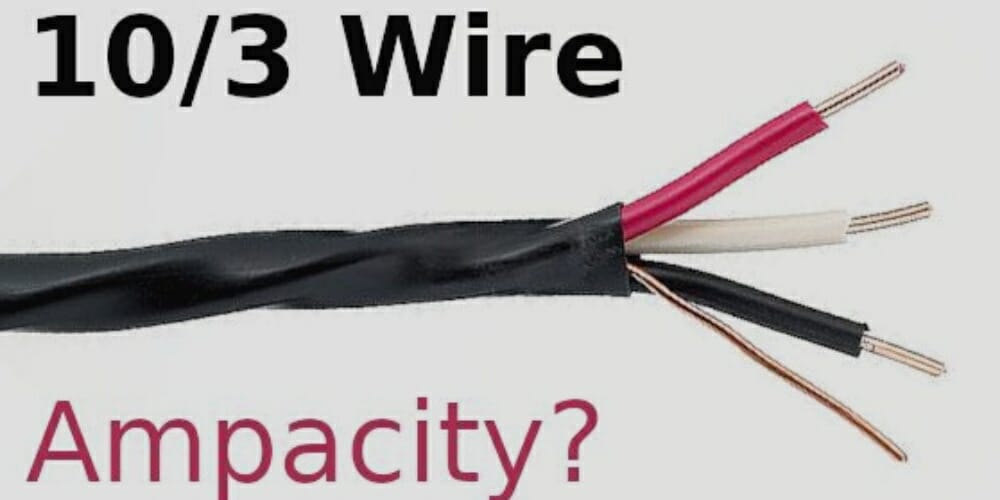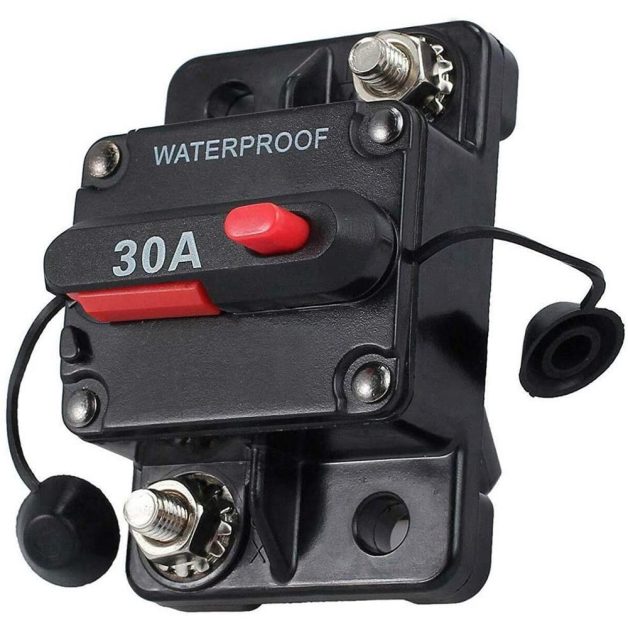How Many Amps Can a 10/3 Wire Handle?

If you use a 10/3 wire, how many amps can it handle?
Generally, this type of wire is suitable for handling up to 30 amps in most cases, as long as it is made of copper and, depending on its insulation, whether it is encased in a conduit or not, the length of the wire, and the ambient temperature. This should be treated as the maximum, whereas around 24 amps should be considered the safer standard current capacity for continuous use.
This is a standard household wiring configuration in Canada and the United States for a 10/3 wire (white, black, red, and bare ground). Read more about the 10/3 wire and for further considerations, including the length of the wire.
A 10/3 Wire
In specifying a ‘10/3’ wire, the 10 indicates the gauge in AWG, and the 3 indicates the number of insulated conductors in the cable (4 wires in total, including the ground).
From the information in the Wire Gauge Reference Table (AWG), the 10 AWG has a bare diameter of 0.101900” (2.58826 mm), a circular mil area of 10,383.311783 mm, and is equivalent in other wire size systems to 12 SWG and 12 BWG.
| Wire Gauge | Bare Diameter (inches) | Circular Mil Area | Equivalent Wire Sizes |
|---|---|---|---|
| 10 AWG | 0.101900″ | 10,383.311783 mm | 12 SWG, 12 BWG |

Considerations
Type and Length of Wire
Copper wire has very low resistivity, enabling it to handle higher currents more efficiently than aluminum.
If you consider the length of the wire, a ten gauge copper wire 10 meters long would have a resistance of around 0.032 ohms. The 10/3 wire should be acceptable for appliances within a reasonable distance of the main breaker panel for a voltage drop not exceeding 3% in a 110V system.
| System Voltage | Maximum Length (feet) |
|---|---|
| 110V | 55 |
| 240V | 110 |
For a 240V system, this length can be doubled. If you need to wire over a longer distance, consider the voltage drop the appliance can tolerate.
For distances longer than 50 feet, a larger wire like 8 AWG should be used to allow for a voltage drop of the conductors.
Applications
Some air conditioners, electric laundry dryers, and other appliances that need up to 30 amps can be run safely on 10/3 wiring using a 4-prong plug.
The 10/3 wire would not be adequate if connecting, for example, an electric stove (which would need an 8/3 wire). Only in controlled outdoor or industrial situations can a 10/3 wire be used for a little higher current than 30 amps. Going lower, the 10/3 wire is unnecessary, for example, for services controlled by multiple switches, such as lighting on a stairway.
| Situation | Recommended Wire Gauge |
|---|---|
| Electric stove | 8/3 |
| Controlled outdoor or industrial | 10/3 |
| Multiple switches (e.g., lighting on a stairway) | lower than 10/3 |
Use of a Conduit
A conduit would lower this rating depending on its size and what other wires run alongside it. In free air, the wire can potentially handle more without overheating. Regardless, the 10/3 wire should be on a 30-amp circuit breaker.
Circuit Breaker and Maximum Load
The 10/3 wire must be protected by a 30 amp circuit breaker or fuse. The maximum wattage load is 2,880 watts for a 120V system (5,760 watts for 240V).
However, the current should not constantly exceed 80% of the 30 amps, which is 24 amps. This means that although the 10/3 wire can handle up to 30 amps, this should be treated as the maximum, whereas around 24 amps should be considered the safer standard current capacity for continuous use.
| Property | Value |
|---|---|
| Recommended Circuit Breaker/Fuse | 30 amp |
| Maximum Wattage Load (120V) | 2,880 watts |
| Maximum Wattage Load (240V) | 5,760 watts |
| Maximum Current Capacity | 30 amps |
| Standard Current Capacity (for continuous use) | 24 amps |
Please take a look at some of our related articles below.
